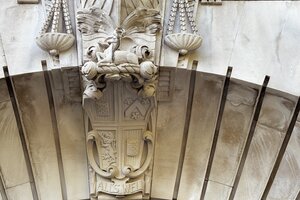
Marking the 60th anniversary of London’s 32 boroughs, this walking tour explores the evolution of local government through the story of Camberwell. It charts the development of institutions in response to intense social and economic change to shape the city we know today. We will celebrate the visible reminders of this history in the streets around us and ask: why does this matter to Londoners today?
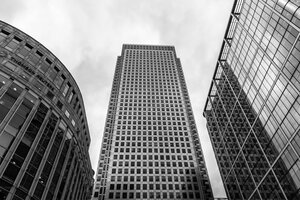
This walking tour will be covering the Dockland’s historical relationship with the United States. Walking from near East India Quay DLR station to Canary Wharf Jubilee line station, this tour explores the Docklands' many connections to US history starting with colonization of the US, leading to the transatlantic trade of enslaved people, and ending with the regeneration of Canary Wharf as we see it today.
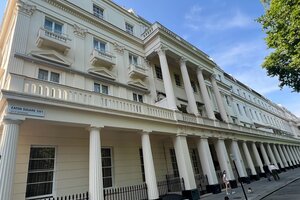
Built in the 1820s for the upper class, Belgravia remains a jewel in the heart of London. Renowned for its grand architecture, garden squares, and cobbled mews, it has preserved much of its original Victorian appearance. Discover 200 years of history: from marshland to gracious living, notable residents, hidden stories, and its evolution into the 21st century.
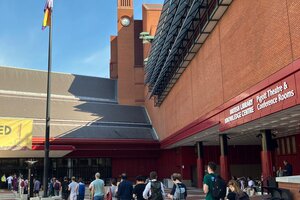
Bloomsbury holds the densest concentration of museums, universities, and libraries in London, housing an array of objects and spaces for teaching and research. These institutions' architecture has structured knowledge and shaped scholars’ experience over two and a half centuries – forming a built record of the values associated with learning from the Enlightenment to today's entrepreneurial knowledge economy.
Sydney Smirke, 1854

How does a knowledge quarter start? What leads it to establish and grow? We will explore how the different communities involved in learning, research, healthcare and bio-science industries, use the buildings, streets and squares of London’s health and life sciences knowledge quarter in Bloomsbury. We will consider what drew institutions to co-locate and what drives the knowledge quarter today.

Bricks have been used for thousands of years. This walking tour will showcase the simple brick – exploring how lumps of clay, crafted and fired by brick makers near Brick Lane have been used to build a variety of ever changing streetscapes over more than 200 years. Walking from Coate St E2 to Fashion Street E1, this tour will visit listed brick arches, housing, bathhouses and the shopping arcades of London's former 1905 Moorish Market.
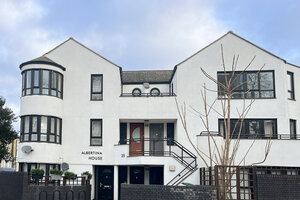
Most people associate Brixton with its busy town centre. But did you know a few steps away Brixton's heart you can find a wealth of green spaces and tranquillity shaped by the area's unique Georgian, Victorian and Modernist architecture – including a series of 1970s council estates by Ted Hollamby – which continue to evolve to serve Brixton's local communities. Join your guide Nikky Catto to find why her Brixton home is not what you expected.

Discover how public green space has been an ever-valued part of London's landscape and infrastructure. This walking tour in and around the green spaces of Kennington and Walworth will explore the rich variety of green spaces in south London, and investigate how these places of nature have been built by the ideas (and fears) of life in the city.

This walking tour of Deptford explores waves of urban change in the area from the Victorian period to today. It highlights shifts in industry and infrastructure, different eras of social housing, public policy and development models. The tour invites reflection on what drives regeneration and how more regenerative practices could benefit people, ecology and community wealth.

A walking tour exploring how movement of people – both daily and generational – has shaped the built environment of the South Bank. From the arrival of the railways to the housing activism of the 1970s and 80s, the tour will look at how the development of new communities has been instrumental in the creation of London’s most vibrant cultural hub

Discover the geographical and historical influences that made Fleet Street a hub of power, faith, and print. Starting at St Bride’s Church, this walking tour explores how its location between The City and Westminster attracted churches, institutions, and businesses, shaping it into a centre of influence for over a thousand years.
Christopher Wren, 1670

A walking tour exploring the development of Southgate from the 18th century to the present day. From landed estates to interwar suburbia and beyond, this walk will uncover masterpieces of Modernist architecture, compare the municipal and suburban influences on the area, and challenge preconceived notions of ‘natural’ landscapes.

Join us on a walking tour that takes you through the developments on both sides of the Richmond Bridge. We will explore how Richmond has evolved over time, visiting a grand villa, residential areas, and former and current workplaces. Together, we will uncover how design trends, architectural styles, and the involvement of local residents have shaped the buildings we see today.
Roger Morris, 1729
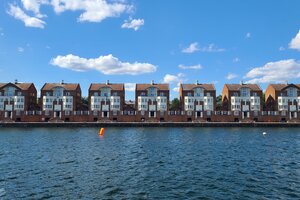
Explore Rotherhithe’s old docks, canals, and riverside paths where history flows through its architecture. Wander past converted warehouses in Rotherhithe Village, admire quirky post-modern blocks in Greenland Dock, and explore how the water still shapes this corner of London.

This walking tour explores the original creativity that formed pre-electricity London. It reveals the invisible hands and minds of individuals who crafted ways of living and the spirit of place—how they mastered their arts and prospered. It questions what our contemporary world may learn from their practices and expressions, and whether a handmade city is a more beautiful, more human city
Various, 0

South of the river is packed with untold history but often gets overlooked. To cover so much you have to move fast! This 10k jog from London Bridge to Greenwich will look at the coming of the Romans to London, maritime development under the Tudors, Victorian slum clearance and how transport in the south determined modern-day London. See southeast London and get fit all at the same time!

Unpack my story of North Kensington’s rich history on this guided walk. My family was one of the first families to move into the Brutalist-style Trellick Tower. From rural roots to industrial hub, class divides to cultural revolution – discover hidden stories, iconic sites, and how migration and activism shaped a vibrant, ever-changing community like no other: my childhood playground.

Our walk explores the river that shaped London. As we follow the North Bank, we will uncover how the Thames sparked the city’s birth, powered trade, and supported daily life. From ancient monument, to medieval bridge building, Victorian engineering, to today’s iconic views and new super sewer – the riverside reveals Londoners' evolving relationship with the Thames.

Working, sleeping, playing – the City of London is home to all sorts of activities after dark. This walking tour will explore buildings and spaces, well known and lesser-known, in darkness, and will tell the history of night-time in London. We will visit places where London works, sleeps and plays at night, and over the course of two hours will even see how night time activity shifts.

This tour takes visitors around the haunts and homes of famous Victorian artists, both international and local, and explores the connections between these personalities and their work, the wider impact of their art on society then and now, and the excitement of the Victorian time period's prolific artistic output and invention.

Step into a world where sermons, gossip, and newsprint shaped the city’s soul. On this two-hour walk between Fleet Street and the Strand, we will explore London’s unique triangle of communication: churches, pubs, and the printing press. These were the original social networks — places where people gathered to worship, to argue, to drink, and to share stories.